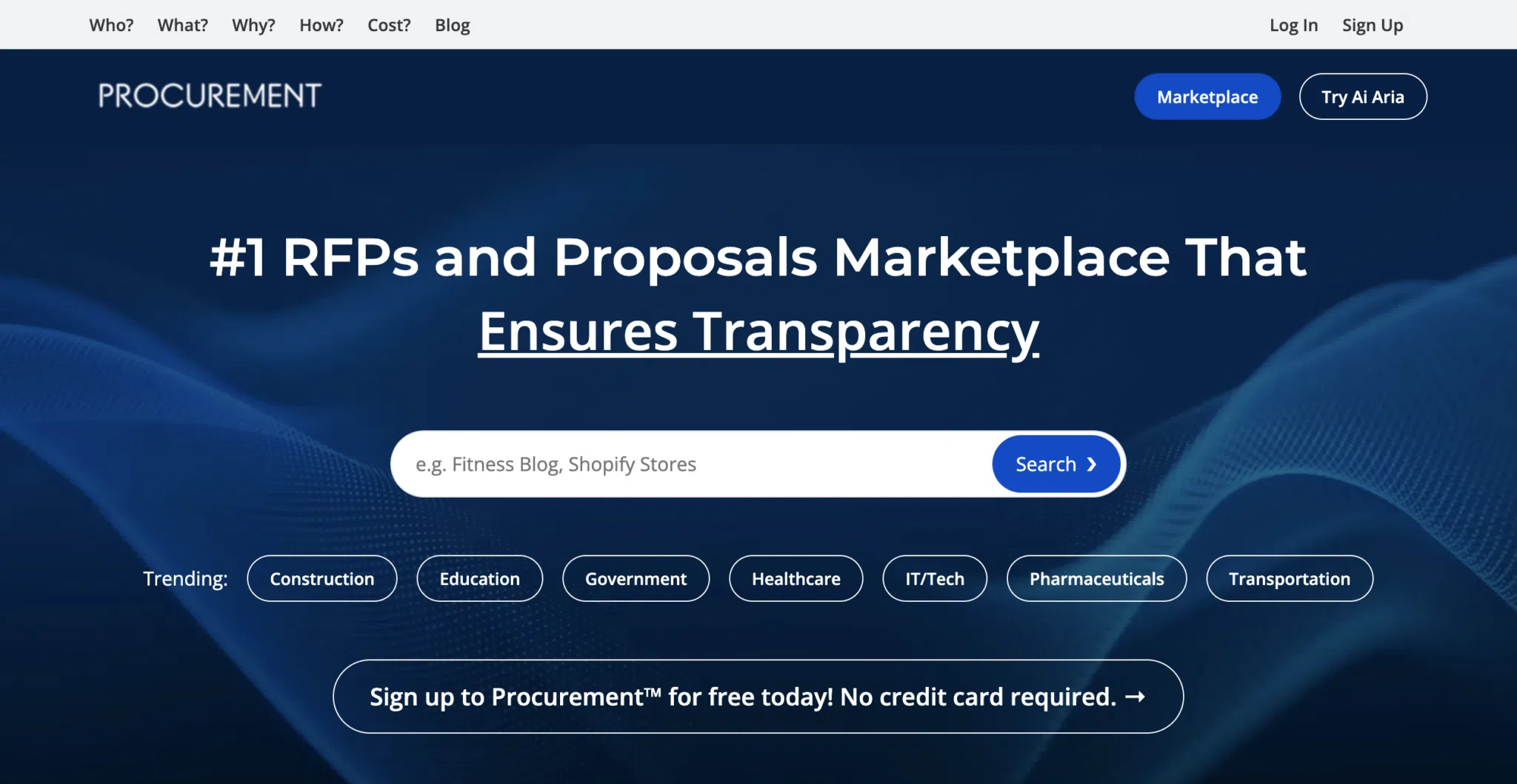 Under Development
Under DevelopmentLearn more about Procurement™ and how your company or organization can benefit from the value it brings!

Software as a service (or SaaS) is a way of delivering applications over the Internet—as a service. Instead of installing and maintaining software, you simply access it via the Internet, freeing yourself from complex software and hardware management.
SaaS applications are sometimes called Web-based software, on-demand software, or hosted software. Whatever the name, SaaS applications run on a SaaS provider’s servers. The provider manages access to the application, including security, availability, and performance.
Examples of popular SaaS products:
An excellent way to understand the SaaS model is to think of it like a bank. A bank protects each customer’s privacy while providing reliable, secure, and efficient service. SaaS does the same.
The SaaS model helps your business use its resources more efficiently. By harnessing the power of SaaS features, your business will improve customization, lower costs and become better connected to those who matter. The application achieves this through four customizable SaaS characteristics.
SaaS Multi-Tenant Architecture
Multi-tenancy is an architecture where all SaaS vendor clients and applications share a single, common infrastructure and code base that is centrally maintained. This architecture allows vendors to innovate more quickly, saving development time previously spent on maintaining outdated code.
Easy Customization with SaaS
Users can easily customize applications to fit their business processes without affecting the shared infrastructure. A SaaS model supports each user and company’s unique customizations changes and preserves them through regular upgrades. This means SaaS providers can make upgrades more often, with less customer risk and lower adoption costs.
Better Access From Network Devices
A SaaS model allows your business to remotely access data from any networked device, making it easy to manage privileges, monitor data use, and ensure many users can see the same information simultaneously.
SaaS Harnesses the Consumer Web
Anyone familiar with Amazon.com or My Yahoo! will be familiar with the Web interface of typical SaaS applications. With the SaaS model, you can customize with point-and-click ease, making the weeks or months it takes to update traditional business software seem hopelessly old-fashioned.
If reducing costs and growing your business is a priority, utilizing SaaS features will allow sales and business teams to engage more effectively with stakeholders as well as existing and prospective clients. Here are the top 5 ways SaaS features can improve your business.
In the past, businesses bought and relied on packaged software; however, this “on-premises” software had several drawbacks.
The Drawbacks of On-Premises Packaged software:
Learn more about Sales Cloud and how a cloud-based CRM can support business growth.
Due to the increased efficiency and cost-effectiveness of software as service applications, many businesses turn to cloud-based SaaS for solutions. Why?
Procurement™:
Get in front of your target market and ideal clients/suppliers with this marketplace platform.
Cloud computing and SaaS have come a long way in helping companies develop end-to-end integrated solutions. With increasing awareness and uptake, organisations are developing SaaS integration platforms (or SIPs) for building additional SaaS applications.
SaaS is one of several cloud computing solutions for business IT issues. Other ‘as-a-Service’ options include:
The payment model for these kinds of services is typically a per-seat, per-month charge based on usage – so a business only has to pay for what they need, reducing upfront costs.
With companies adopting various “aaS” services, long-term relationships with service providers will grow, leading to innovation as customers’ evolving needs are understood and provided for. SaaS may one day help address critical business challenges, such as predicting which customers will churn or which cross-selling practices work best.
With the need for high-volume data, software performance and backup increasing daily, it’s easy to see why so many businesses are choosing to outsource to cloud-based providers. If you’re considering moving to a SaaS platform, find out what Salesforce has to offer for businesses of all sizes.
Here’s How It Works:
1. Refer a Friend: Share the name and contact details of anyone who might benefit from our innovative web solutions.
2. They Sign a Deal: When your referral becomes a client and completes a $5,000+ contract with us, you get rewarded.
3. Get Paid: Receive $1,000 in cash as a thank you for your referral after final payment has been received from the referred client!
It’s that simple. Help your friends get the best in web design and development, and earn big while doing it. Start referring today and watch your rewards grow!
*Subject to IRS income tax rules and regulations
©2013-2025 | All rights reserved.